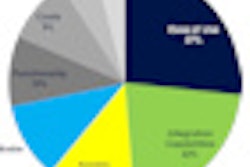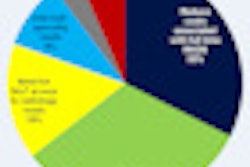Following up on previous research relating to automated segmentation algorithms, the researchers wanted to use that data to create a more intelligent PACS interface, said presenter Supratik Moulik, MD. By making use of the segmentation data, the system can become context-aware, so that it knows if you're measuring a lesion in the kidney or liver, he said.
Next, the interaction with the system needs to be more fluid and volumetric, he said.
"This is achieved by coupling 3D hardware with spatial localization hardware to allow direct interaction with the scan -- i.e., you can reach into the scan and pull out an organ to evaluate," according to Moulik. "We incorporate multiple modern computational [application programmer interfaces (APIs)] and cutting-edge hardware to facilitate this process."
These include OpenGL, OpenCL, stereoscopic 3D technology, and infrared spatial tracking, he said.
"By removing the barriers presented by the traditional mouse and drop-down menu model, the radiologist can spend less time on repetitive tasks and more time immersed in the diagnostic process," Moulik said. "Having a context-aware PACS station can improve our ability to provide meaningful quantitative reports."



















